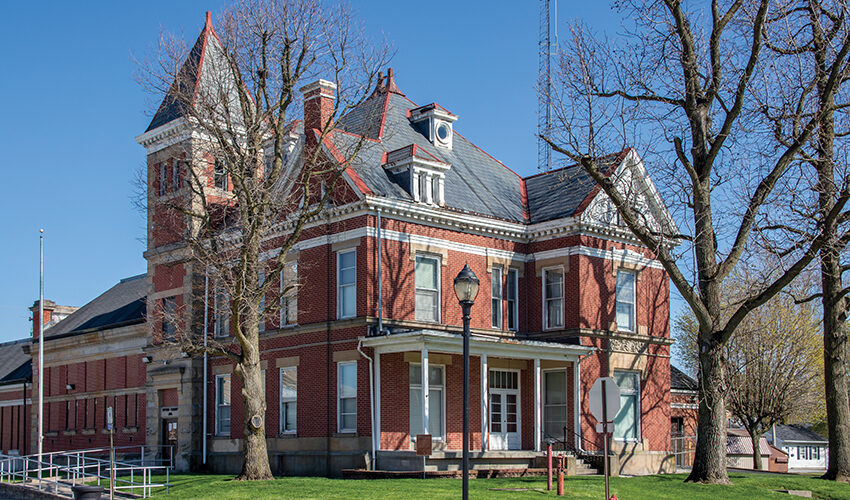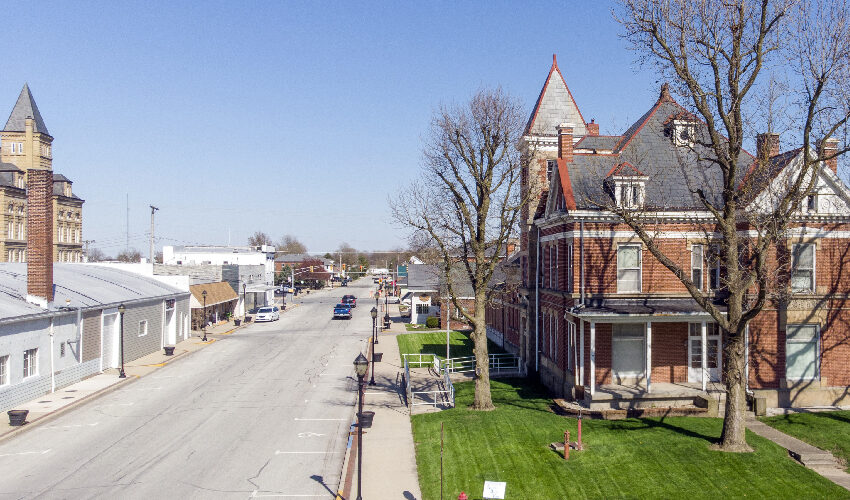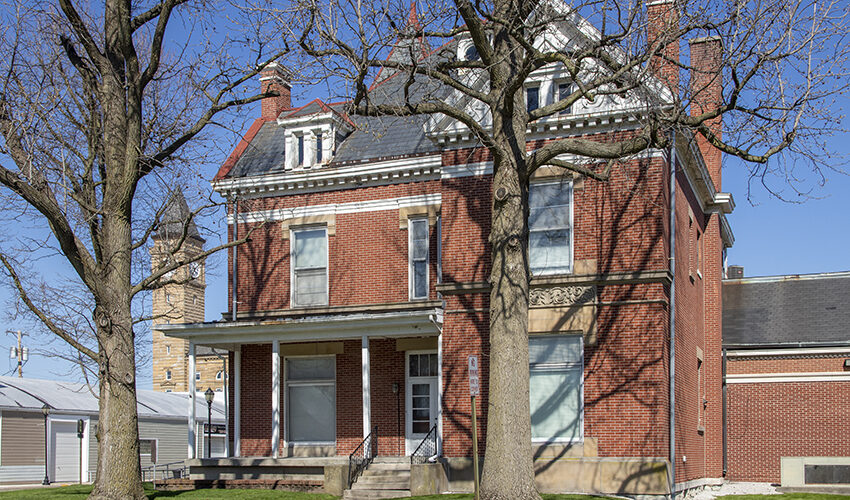

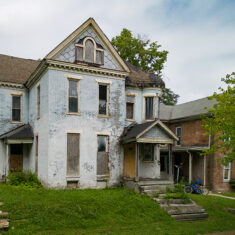
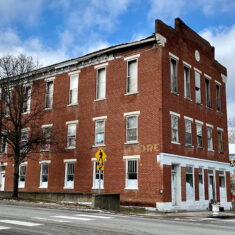
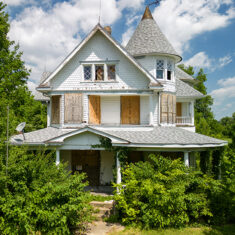
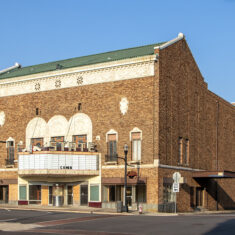
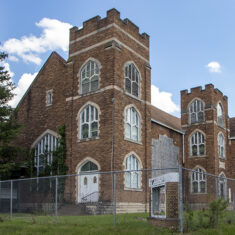
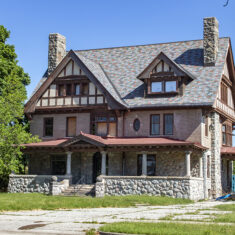
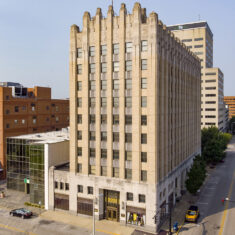
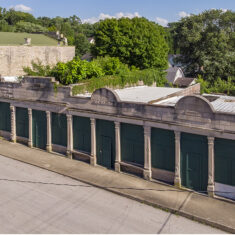
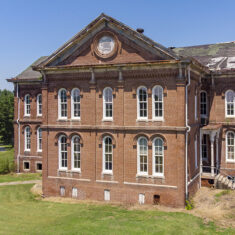
Tipton County Jail & Sheriff’s Residence
203 S. West Street, Tipton
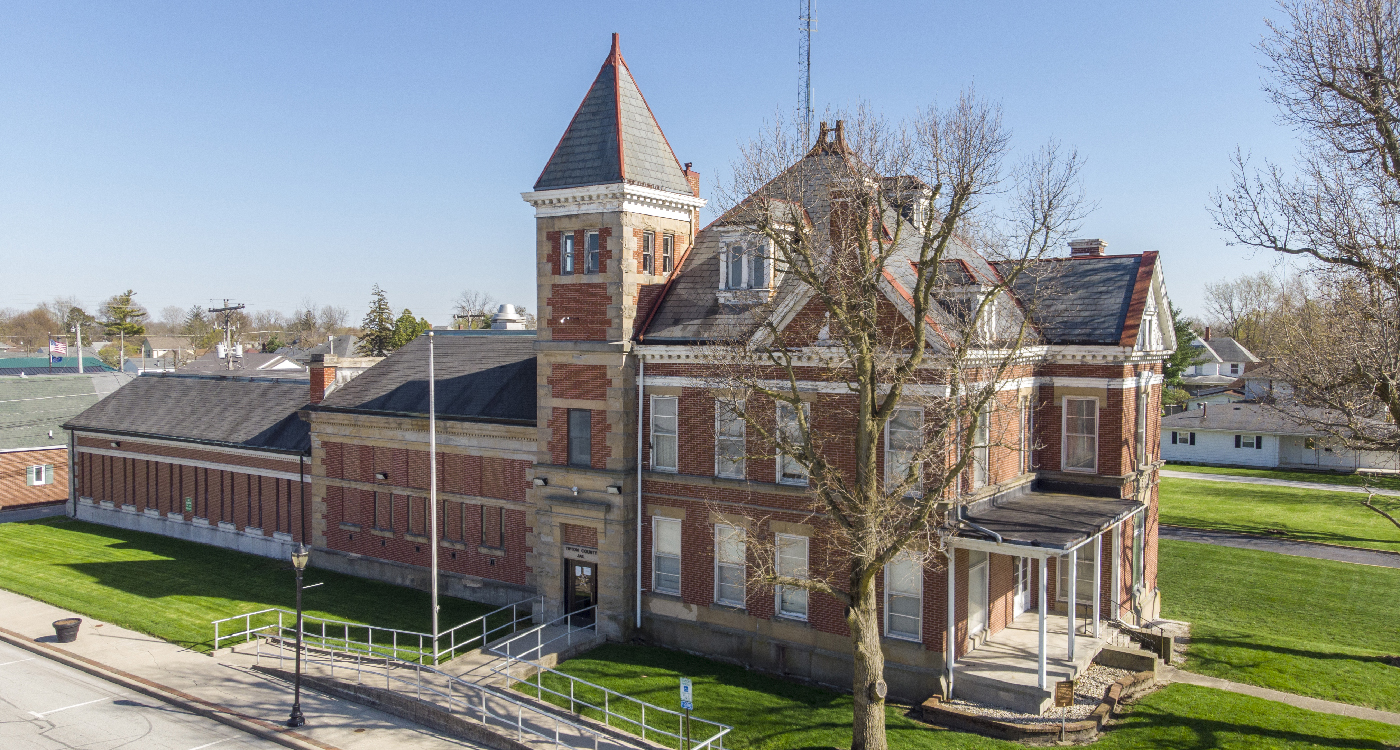
House Arrest
At the end of the nineteenth century, many Midwest governments required sheriffs to live next door to the county jail for security purposes. Some took it a step further, combining the jail and residence into one structure.
In Tipton County, officials hired Adolph Scherrer, one of the state’s most celebrated architects, to design an imposing new sheriff’s house and jail. Completed in 1895, the structure married a handsome brick house with a more utilitarian cellblock, connecting the two with a three-story brick and stone tower.
Today, the jail and 1894 Tipton County Courthouse – also designed by Scherrer – are the county’s only two National Register-listed buildings.
Though they eventually dropped the order requiring the sheriff to live on site, officials continued to use the building as the county’s jail and law enforcement offices for the next 125 years. However, after completing a new $16 million jail facility last year, the county vacated the historic building.
Since listing the building on our 10 Most Endangered list last year, Indiana Landmarks helped fund a feasibility study to evaluate its reuse options. Similar historic jails around the state have been creatively adapted as restaurants, offices, museums, even apartments and condos. Local support for saving the building is growing, but any rehab will be expensive. In a rural county with limited funding, finding the capital will be a challenge.
Mark Dollase
Vice President of Preservation Services
Indiana Landmarks
317-639-4534
mdollase@indianalandmarks.org
Gae Matchette
Vice President
Tipton County Historical Society
765-419-2342
happyta2@hotmail.com
Saving threatened buildings takes teamwork. You can be a part of that team. Reach out to local leaders. Let them know these buildings are important to you. And support state and local preservation groups.

